I. The historical significance of Tet
1. Roots in ancient Vietnamese culture
Tet, sometimes known as the Vietnamese Lunar New Year, is a celebration rich in cultural value and history. Originally an agricultural celebration celebrating the end of winter and the beginning of spring, a crucial time for farmers to start their crops.
This link to the natural cycles highlights Tet's significance as a harmonic, prosperous, and rejuvenating tool. It is a reflection of Vietnam's great respect of custom and communal values, not only a holiday.
Tet originated thousands of years ago when agricultural methods and spiritual beliefs combined to produce this distinctive celebration. Inspired by Taoism, Buddhism, and Confucianism, the customs surrounding Tet have purpose.
Families respect their ancestors by means of ceremonies, pray for success, and pursue peace in their relationships. Vietnamese society is based on these principles, which also define Tet rituals.
2. Tet during different historical periods
Tet has changed over time yet always had its fundamental nature. The celebration was observed under the Lý and Trần dynasties with large-scale public events and magnificent ceremonies.
These gatherings allowed the emperors to show thanks for a great year and advance solidarity among the people. During this time, rituals underlined the need of peace among people, the earth, and the spiritual realm.
Later, especially under colonial control, Tet evolved to represent national identity and resiliency. The preservation of Tet customs became increased importance as outside forces started to change Vietnam.
It was a reminder of the great cultural legacy of the nation and its people's resiliency.
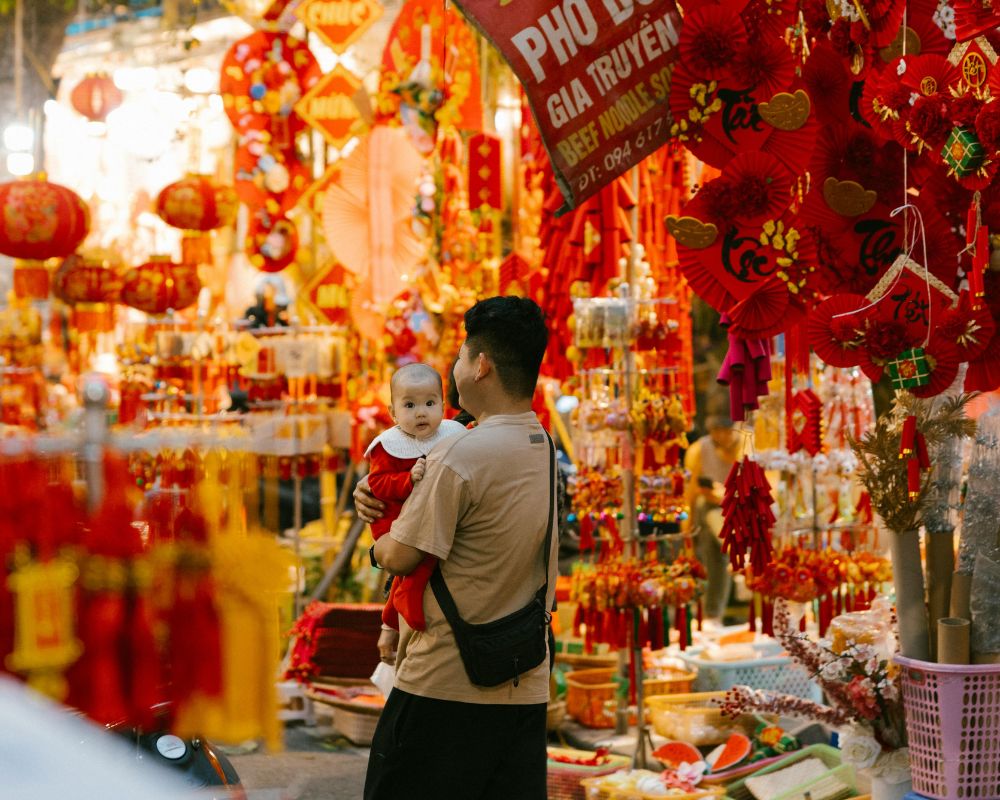
Market with decorations during Tet Holiday in Vietnam
Tet is still the most significant festival observed in Vietnam today. Modern festivities mix time-honored practices with modern inspirations, therefore fusing the old with the new.
Families still assemble to honor their ancestors, tidy their houses, cook traditional dishes like bánh tét and bánh chưng.
Globalization and technology, however, have brought fresh celebrations, sending digital greetings and online Tet decoration purchases among other things.
Notwithstanding these developments, Tet's spirit is the same. Vietnamese people should use this time to venerate their ancestors, re-establish their roots, and eagerly await a rich year to come.
Tet holiday traditions' historical relevance stems from its adaptability and preservation of the ideals that define it as such a fundamental component of Vietnamese society.
Tet is an enduring emblem of Vietnam's varied customs since it is still a celebration of rebirth, thanksfulness, and unity across ages of change.
Read more: Lunar New Year In Vietnamese: A Complete Guide 2025
II. Essential Tet holiday traditions
1. Preparations for Tet
Vietnamese families painstakingly clean their houses and decorate them with symbolic objects, so getting ready for Tet starts weeks ahead. Cleaning the house is more than just neatliness, it's a ritual meant to clear bad fortune off the path and drive good fortune forward.

Clean the houses before Tet
Kumquat trees, peach blossoms, and apricot flowers abound in homes, each symbolizing longevity, wealth, and happiness. Red envelopes and Tet holiday decorations, which stand for blessings and good fortune, help to accentuate the celebratory mood.
Preparations revolve mostly on traditional Tet cuisine, which families get together to create dishes with particular significance. Sticky rice cakes wrapped in banana leaves, bánh chưng and bánh tét, show thanks to ancestors and family member solidarity.
Made to welcome visitors and share the sweetness of the new year, sweet delicacies include mứt, candied fruits are These foods are cultural gems reflecting the core of Vietnamese customs, not only eating.
2. Tet Eve celebrations
Families gather to say goodbye to the previous year and welcome the new one, therefore Tet Eve also known as Giao Thừa, is the most significant celebration time.
This evening is the family reunion meal, a treasured custom when loved ones share a feast comprising symbolic cuisine including boiled chicken, sticky rice, and pickled vegetables.
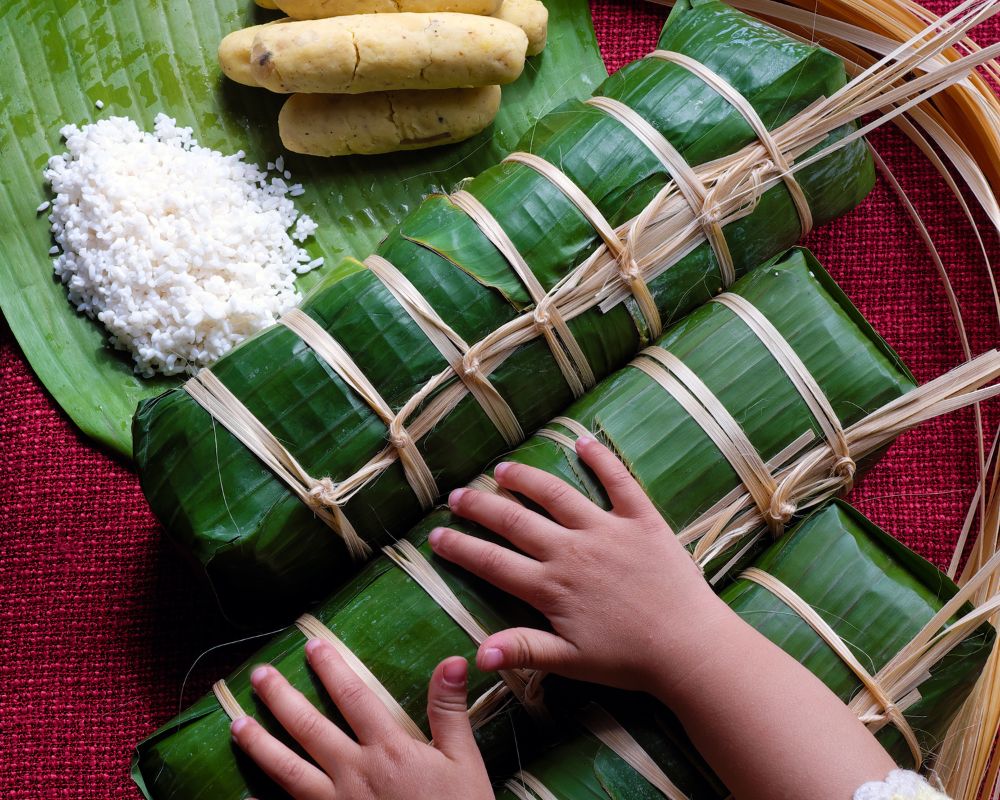
Vietnam banh tet
One further essential component of Tet Eve is ancestor worship. To commemorate their ancestors and ask them to join in the festivities, families erect altars featuring food, flowers, and incense. This custom honors the great regard Vietnamese people have for their ancestors.
3. First day of Tet
Tet's first day is bursting with happy events stressing good fortune and rebirth. Families give New Year wishes and red envelopes loaded with lucky money, hence visiting family and friends is a great custom.
Another important custom is Xông đất, or first-footing, when the first guest to a house is said to bring luck for the whole year. Families frequently choose this person with great care to guarantee they have a good and rich energy to define the course of the next year.
III. Regional variations in Tet traditions
1. Tet in Northern Vietnam
Considered the birthplace of Vietnamese culture, Northern Vietnam is where most careful preservation of ancient Tet rituals is done. Families here stress ancestor worship, hence making sure altars are exquisitely ornamented with fruits, flowers, and offerings.
Every home needs the famous bánh chưng, a square sticky rice cake. Its form stands for the earth, and its components show thanks to ancestors and desire for a good year.
In the north, peach blossoms, hoa đào, are the floral emblem of Tet holiday traditions. These fragile pink blossoms are supposed to bring luck and drive away bad spirits. Many residences also have kumquat trees, whose fruits represent fertility and riches.
Elderly people present red envelopes containing fortunate money to youngsters on the first day of Tet, therefore bestowing blessings for health and success in the new year.
Read more: Top Things to Do During Tet in Hanoi
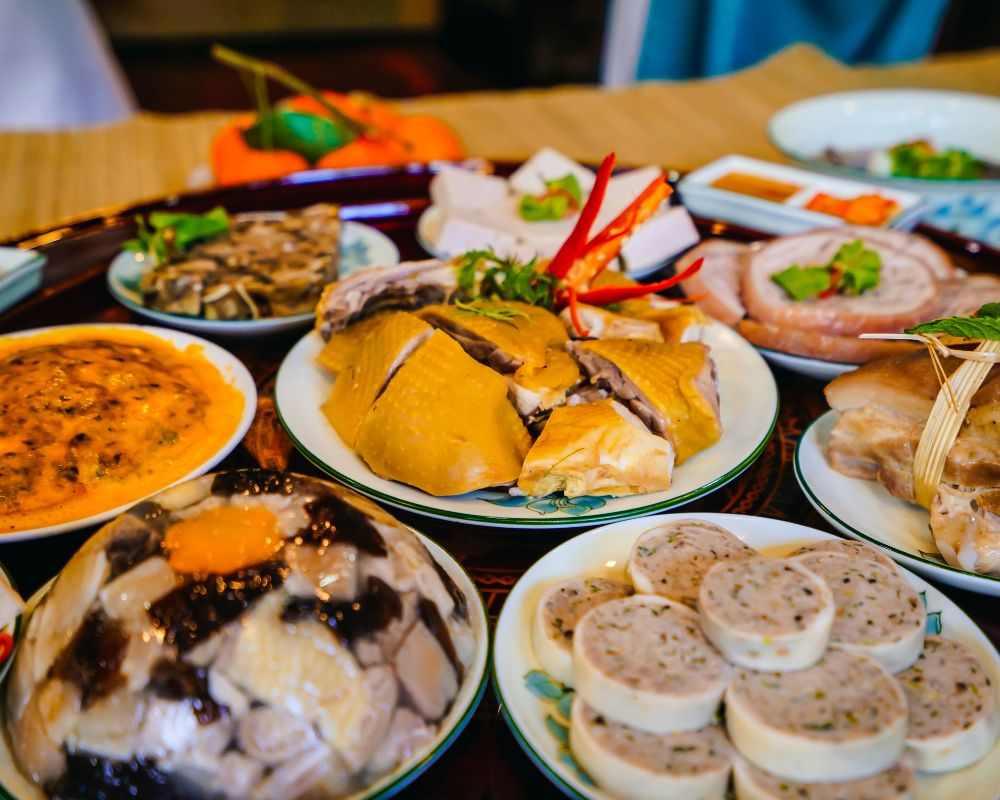
Tet cuisine of Vietnam
2. Tet in Central Vietnam
Tet is defined in central Vietnam by its harmony of simplicity and color. Geography and history of the central region define its customs and help to create them distinct from others. Families in this area are renowned for their exquisitely laid out food offerings to ancestors.
Usually featuring bánh tét, a cylindrical sticky rice cake stuffed with pork and mung beans, these trays serve as the equivalent for the bánh chưng from the north.
Prominent decorations in central Vietnam, marigold flowers and apricot blooms (hoa mai) represent happiness and wealth. People in this area also value cleanliness and organization highly since they think that a neat house will attract good fortune and ward against bad luck.
Tet holiday traditions in the central area can include community events when neighbors join together to exchange food, tales, and joyful activities.
3. Tet in Southern Vietnam
Tet holiday traditions is observed in southern Vietnam with a leisureful and happy attitude. The warm temperature and rich soil shape the customs of the area, which usually center on hospitality and plenty.
Families here choose the center of their Tet decorations to be golden apricot flowers (hoa mai vàng), a sign of riches and pleasure. Often found on ancestral shrines, coconut, watermelon, and papaya each fruit stands for good fortune and wealth.
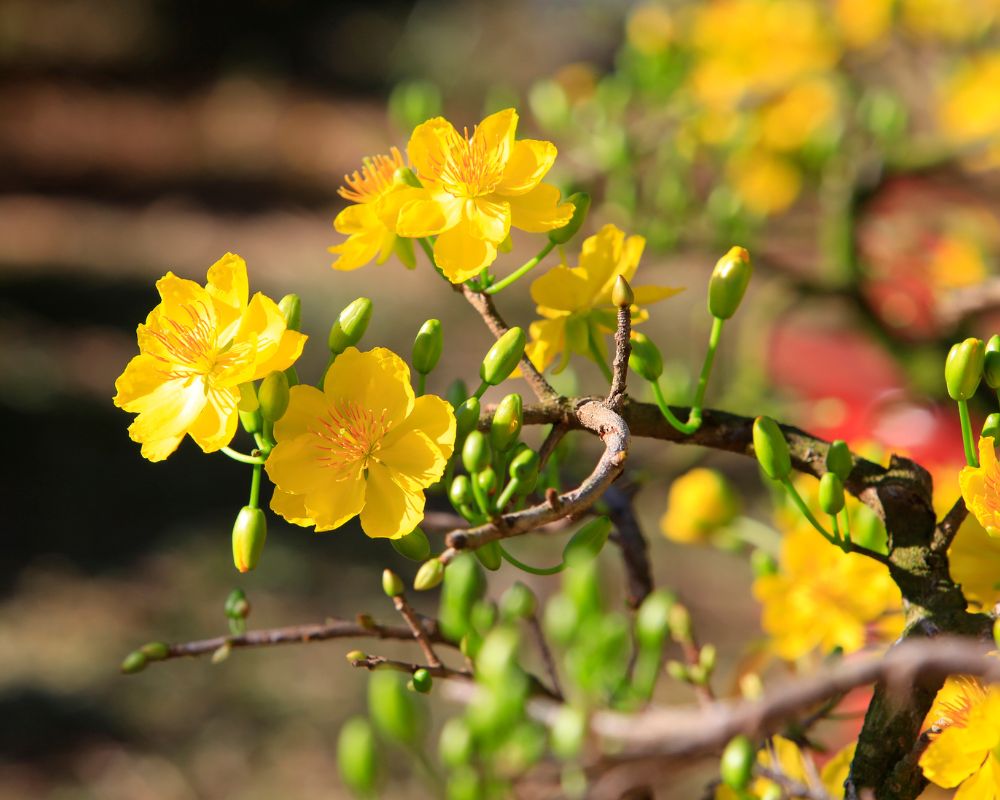
Hoa Mai tree
Southern homes make a feast of traditional cuisine like canh khổ qua (bitter melon soup) and thịt kho hột vịt (braised pork with eggs).
These foods are selected for their symbolic connotations; bitter melon soup, for example, stands for the optimism that last year's challenges would vanish and allow space for a better future.
First-footing, or xông đất, is a custom followed extremely seriously in the southern areas. Families sometimes welcome someone with a pleasant attitude and successful background to first enter their house, therefore guaranteeing good fortune for the next year.
With fireworks, lion dances, and busy marketplaces adding to the excitement, Tet celebrations in southern Vietnam are also renowned for their joyous mood.
Read more: Ho Chi Minh New Year’s Eve
IV. What is Tet Holiday? How long is Tet Holiday in Vietnam?
Among other Vietnam holidays, the Tet holiday, the Vietnamese New Year, stands as the most important one, a national celebration commemorating the start of the new year in the conventional lunar calendar.
Although tet holiday dates vary yearly, usually they last between mid-January and late February.
The Tet celebration in 2025 will hold the calendar on January 29, therefore marking the Year of the Snake in the next year. Arriving on February 17 in 2026, it will ushering in the Year of the Horse.
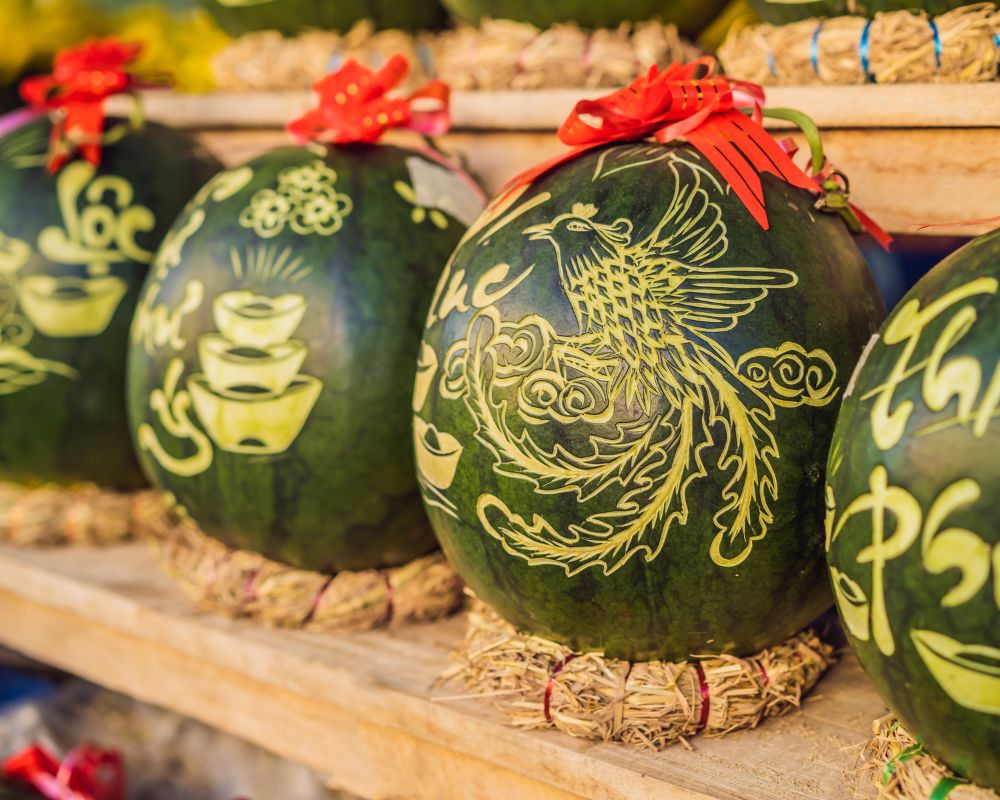
Water melons with festive engraving on Tet Eve
Tet celebrations last three days and can go up to a whole week, broken out into the days before New Year's Eve, New Year's Eve itself, and the following New Year's Days.
On the 23rd day of the 12th lunar month, the custom of honoring Ong Tao, the guardian of the family kitchen fire, marks the first celebration signaling the arrival of Tet.
It is a spiritual exercise that helps one to pray for a year of plenty and fortune. The most pivotal Tet moment occurs midnight on the eve of the lunar New Year.
Families arrange two ancestral altars at this same moment: one for the skies and the land and another for the ghosts of their ancestors.
This custom has great meaning in leaving behind the tragedies of the past to greet the blessings and goodness of the next year.
Officially covering three days from the first to the third day of the first lunar month, the Tet period follows Vietnamese New Year's Eve marks a fresh beginning for a great new year.
Customarily, this is the time for families to gather, see relatives, honor the lifetime of the old, give fortunate money to young people, and send well wishes for a safe and rich year.
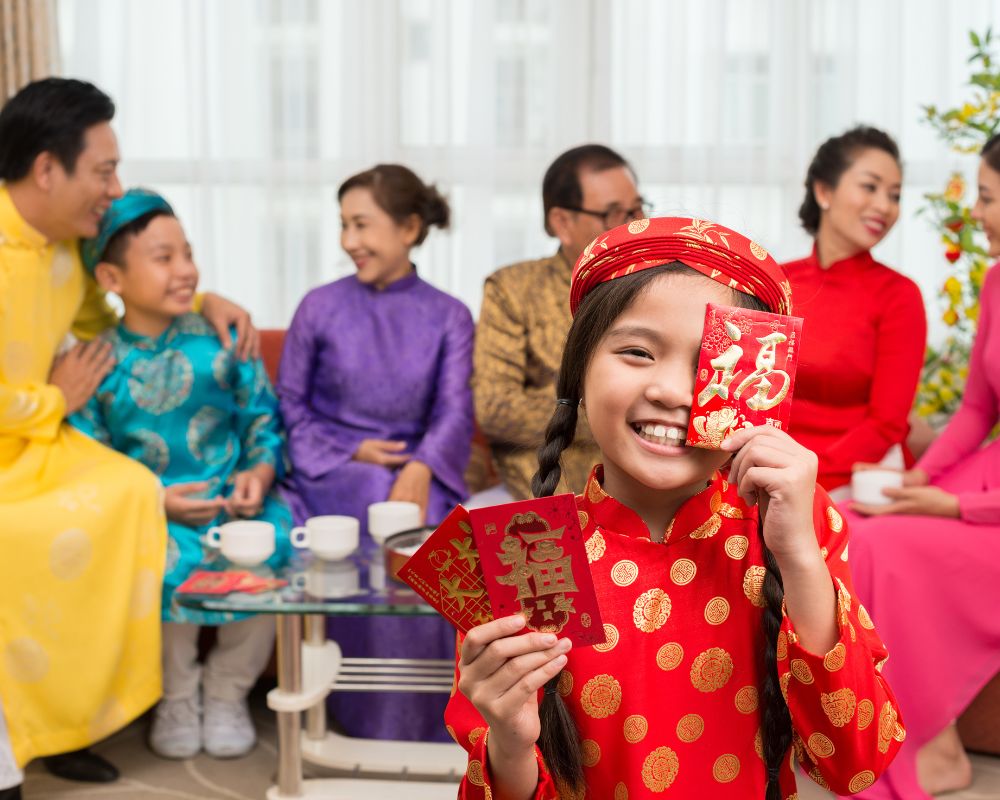
Showing envelopes for Tet Holiday
Saying "Mong 1 tet cha" - the first day is set aside for visiting paternal relatives; "Mong 2 tet me" - the second day is dedicated to mother relatives; and "Mong 3 tet thay" - the third day honors teachers.
If you are new to Tet holiday traditions or looking to deepen your understanding, take the time to learn and participate. Explore the significance of Vietnamese cultural traditions during Tet, from the preparation of bánh chưng and bánh tét to the symbolic acts of xông đất and ancestor worship.
Each tradition tells a story, and by engaging in these practices, you contribute to preserving and sharing Vietnam’s cultural identity.
If you plan to travel during this festive season, consider renting a car in Vietnam with Vietnam Budget Car Rental. Their reliable services ensure a convenient and comfortable journey, allowing you to fully enjoy the beauty of Tet holiday traditions and explore Vietnam’s vibrant celebrations.
